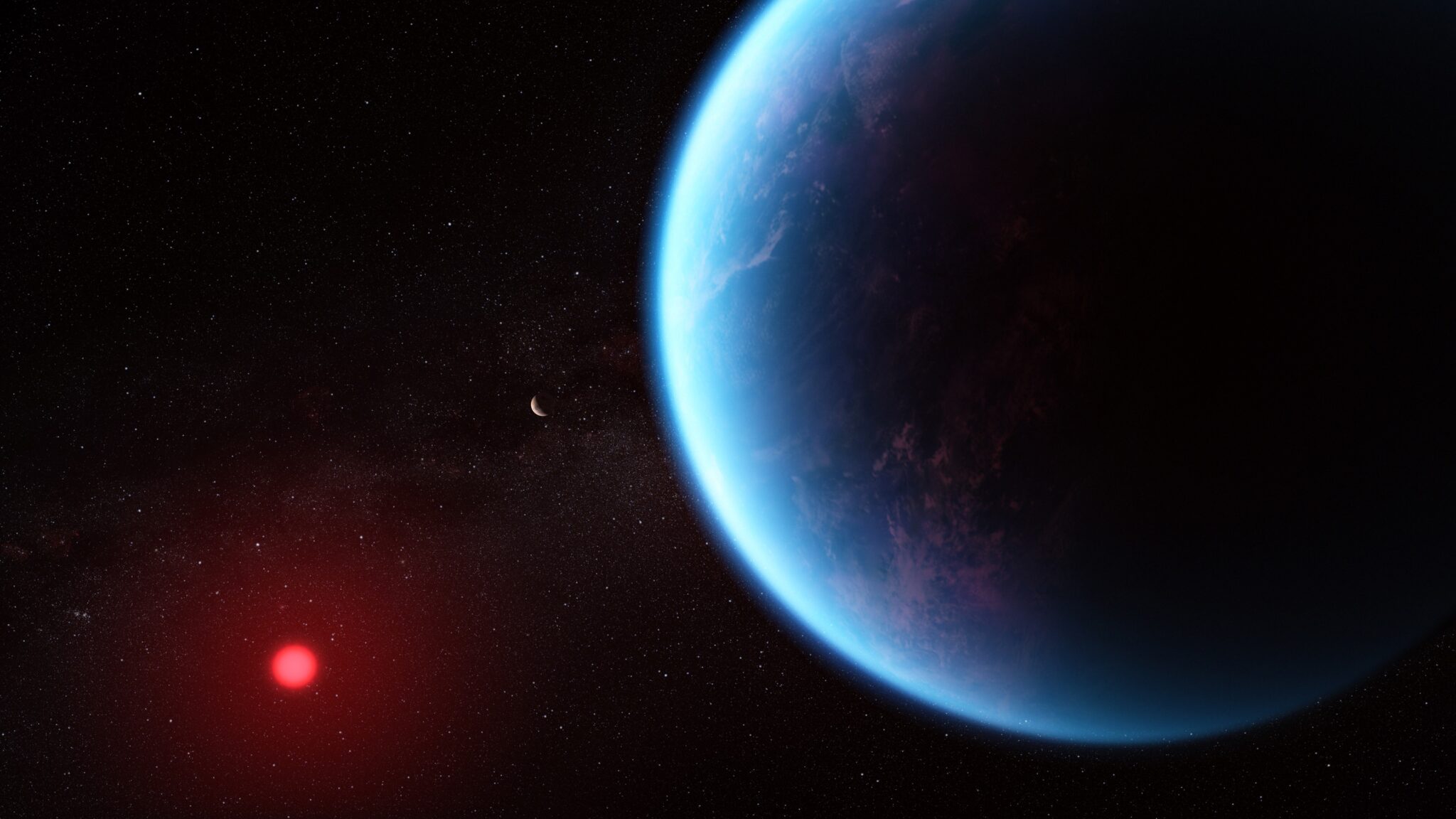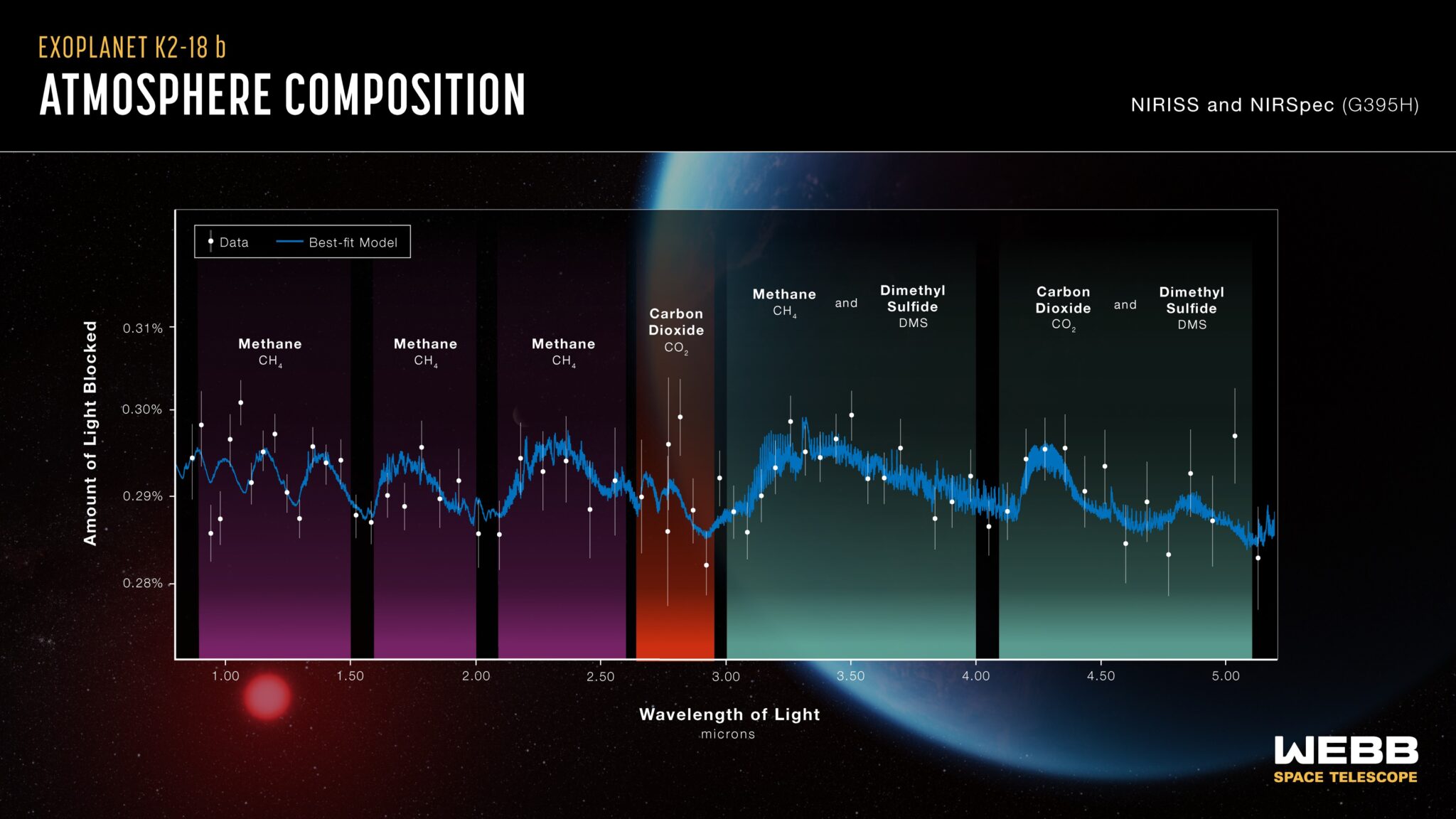The James Webb Space Telescope (JWST) has found exciting evidence that important carbon molecules may exist in the atmosphere of the exoplanet K2-18 b, also known as the “Hycean world”, indicating the presence of a liquid ocean and other chemical bonds that make this world potentially habitable.

K2-18 b is an exoplanet located about 120 light-years from the Solar System. This planet has long attracted the attention of astronomers because of its unique characteristics. It has a radius two to three times that of Earth and is located in a habitable zone around its cold star. Such a zone theoretically provides the planet with an important ingredient for life — liquid water.
New research conducted by a team of astronomers has found traces of carbon dioxide and methane in the atmosphere of K2-18 b. This indicates the presence of complex chemical compounds that may indicate the existence of an ocean on this planet. Importantly, no ammonia has been detected, which reinforces the hypothesis of a watery ocean.
Nikku Madhusudhan, a leading scientist at Cambridge University, notes that these results highlight the importance of exploring different types of planets in the search for life in space. Until now, astronomers have focused on smaller rocky planets, but hydrogen worlds like K2-18 b are becoming increasingly interesting to study.
K2-18 b is a representative of a class of planets known as sub-Neptunes, having a mass significantly larger than Earth’s, but smaller than gas giants of the Neptune type. These planets are a mystery to astronomers because they differ significantly from the planets of the Solar System.
Despite the exciting discoveries, it is important to remain cautious in making conclusions about alien life. Even if there are carbon molecules and traces of water in the atmosphere of K2-18 b, this does not guarantee the existence of life or its suitability on this planet.

The study is also important because, for the first time, JWST provided an opportunity to obtain detailed data on the atmosphere of an exoplanet during its crossing of the front of its star. Such data are important for studying the chemical composition of the atmosphere and conditions on the planet.
Astronomers intend to continue observing K2-18 b with the help of JWST and collect more data to confirm their conclusions and study this mysterious “Hycean world” in more detail. This can open up new horizons in our understanding of potentially viable planets in other parts of the Universe.
Earlier we reported on how real the planets from “Star Wars” were.
According to NASA.
Follow us on Twitter to get the most interesting space news in time
https://twitter.com/ust_magazine
